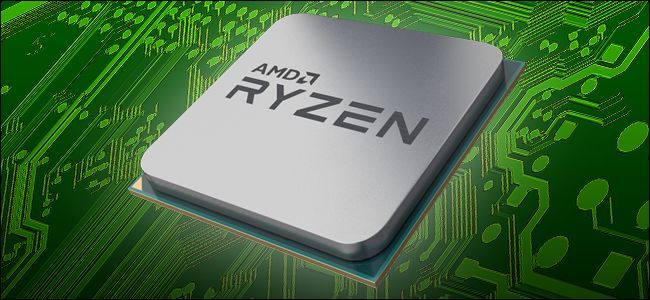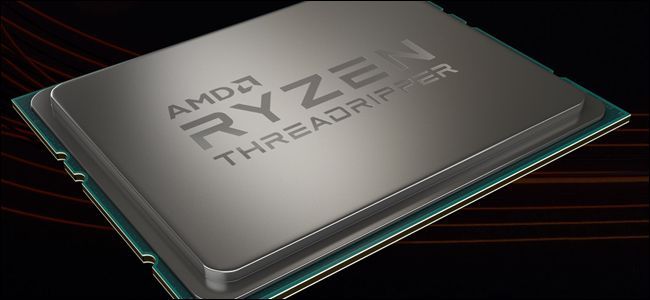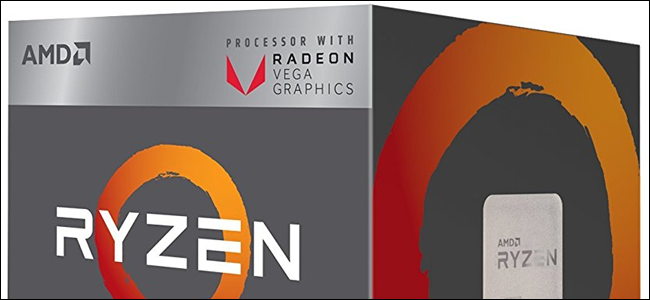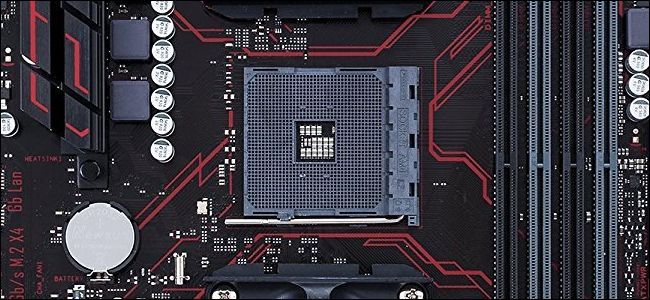Quick Links
Despite the wise acquisition of ATI's Radeon graphics card division and some interesting diversification on the APU market, AMD has been playing second fiddle to market leader Intel for over a decade. But things have been looking up for the underdog as of late: the company's Ryzen series of CPUs is a bona fide hit with both critics and consumers. Is now the time to invest in an upgrade for your CPU, and possibly a compatible motherboard to go with it?
Short answer: Yes. AMD's improved strides with the latest CPU models make them well worth the money for an upgrade, especially if you can match them up with your existing components. The high-end Ryzen and Threadripper lines are competing well with Intel on price and availability, and the new combined Ryzen-Vega APU chips make great choices for frugal machines that still have surprisingly flexible gaming capabilities.
Ryzen and Threadripper Give Great Performance Improvements
The Ryzen class of processors was launched last year on the AM4 socket, itself only introduced in September of 2016. At the moment there are only nine CPUs in the line, two in the entry-level Ryzen 3, branch, four in the mid-range Ryzen 5 branch, and three in the high-end Ryzen 7. (Two new APU designs are branded "Ryzen with Vega" by AMD, but they get their own dedicated section below.)
At similar price points and market segments, Ryzen is closing the gap with Intel's Core series processors. The current top-of-the-line model, the Ryzen 7 1800X, can't quite get a knockout victory over Intel's comparable Core i7-7700K. But with eight processor cores to Intel's four, it's notably better at multitasking, and its single-task performance isn't so far behind that it's an automatic non-contender (as some previous AMD designs have unfortunately been).
AMD has also introduced their top-of-the-line Ryzen Threadripper chips, ultra-high-end designs meant to compete with the best that Intel has to offer. Three models are on offer in 8, 12, and 16-core variations, priced from around $500-1000. In terms of performance, they're competing with Intel's X-series at various levels, and punching above their weight in each one. But be aware, Threadripper processors use a new sTR4 socket, unlike the less-expensive Ryzen models.
Trying to make a completely bonkers gaming PC at the $2000+ level and saving some money on the processor and motherboard may seem like conflicting goals, but the Threadripper chips seem to be enabling that. We're a ways out from a major platform upgrade, so now's a good time to buy.
Ryzen APUs Offer Value and Gaming Versatility
AMD's "Accelerated Processing Unit" or "APU" series offers a CPU with a beefed-up integrated GPU that can handle more powerful, demanding games and media applications that a CPU alone. Most CPUs (including standalone designs from AMD and Intel) offer at least some form of integrated graphics, but AMD's APU designs go the extra mile. The latest APU series, which confusingly also gets the "Ryzen" branding "with integrated Vega graphics," are a step ahead of their predecessors.
The Ryzen 5 2400G and Ryzen 3 2200G chips are both quad-core CPU designs with integrated 11-core and 8-core GPUs, respectively, using the budget-friendly AM4 socket. They're competing with mid-range offerings from Intel's i5 and i3 lines, and at $169 and $99, offering compelling prices. But what's really impressive is that these chip designs can get respectable performance from some AAA 3D PC games, no discrete graphics card necessary.
According to early testing benchmarks from AnandTech, the new Ryzen-Vega chips can deliver gaming framerates at approximately triple the performance level of a comparable Intel chip on its own. The combined architecture can even compete with some low-level discrete graphics cards, in the range of NVIDIA's GT XX30 series. Considering you get all of that for $100-170, when an Intel build would need at least $250 of combined CPU and GPU investment for the same level of power, it's an alluring proposition for value builds and home theater PCs.
Now, these new Ryzen-Vega chips aren't going to replace full-power gaming PCs any time soon. They can handle games designed for broad appeal, like Rocket League, Overwatch, and League of Legends with ease. But the integrated graphics will still dip well below the 30 frames per second level on more demanding and less optimized fare like Grand Theft Auto 5, DOOM, or PlayerUnknown's Battlegrounds. But for someone who wants a little extra gaming oomph to be the icing on their budget build cake, the Ryzen 5 2400G and Ryzen 3 2200G offer fantastic values. And there's nothing stopping you from dropping a conventional graphics card into the AM4 motherboard's PCI-Express card slot later if you want access to more demanding games.
The AM4 Socket Will Probably Be Around for Quite a While
Perhaps as a side-effect of its budget-focused market position, AMD's CPU socket designs (and the motherboards that rely on them) have lasted longer than their Intel counterparts. The AM3+ socket was first introduced way back in 2011, and was compatible with the previous generation of AMD chips, in addition to being backwards-compatible to AM3 designs. The FM2+ socket, used with the company's older integrated APU designs, had a similar lifespan.
That being the case, it's reasonable to assume that the AM4 socket released for the Ryzen family will also be used for upcoming "Zen" chips, with upgrade options continuing for at least four years and possibly more. That means it's a great time to invest in a high-end AM4 motherboard, safe in the knowledge that you'll be able to swap in a more powerful Zen processor well down the line.
The AM4 socket supports DDR4 memory, the fastest and latest available in 2017, but might be at a disadvantage next year when the DDR5 standard becomes finalized. That said, an AM4 motherboard will probably benefit more from a processor upgrade than it would from faster RAM in any case. The new Threadripper-exclusive socket sTR4 supports DDR4 memory as well.






